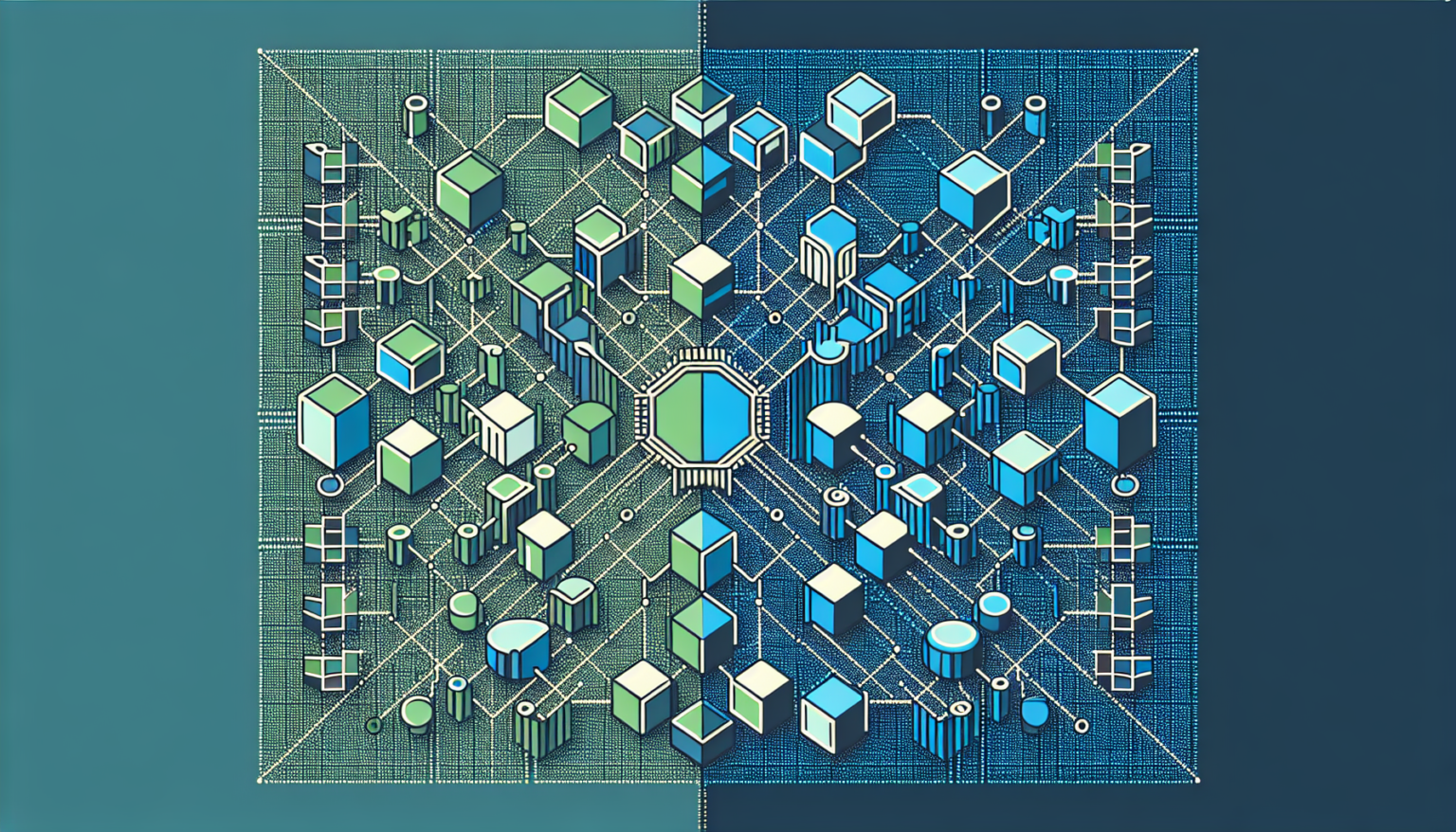Understanding Layer 1 Solutions
What is Layer 1?
Layer 1 refers to the base layer of a blockchain network. This is the core architecture including the protocol on which all transactions and operations occur. Prominent examples of Layer 1 blockchains are Bitcoin, Ethereum, and Binance Smart Chain. These networks operate independently of any other protocols or systems, serving as the foundation for decentralized applications (dApps) and transactions.
Key Features of Layer 1 Solutions
Scalability
Scalability is often the biggest challenge for Layer 1 blockchains. As more users join the network and more transactions occur, the system can face congestion. For instance, during peak times, Ethereum has experienced delays and higher gas fees, a challenge that developers continuously seek to address.
Security
Security on Layer 1 solutions comes from their decentralized nature. These blockchains generally require a significant amount of computing power to alter data or perform malicious actions, making it difficult for potential attackers to compromise the network.
Decentralization
Decentralization is another core principle of Layer 1 blockchains. They operate on distributed networks where no single entity has control over the entire system. This is vital for maintaining trust among users and ensuring that no centralized party has undue influence.
Popular Layer 1 Solutions
Bitcoin
Bitcoin, the first and most recognized cryptocurrency, operates as a Layer 1 blockchain. It focuses primarily on peer-to-peer transactions and has a robust security model based on proof-of-work consensus.
Ethereum
Ethereum, meanwhile, introduced smart contracts and enabled developers to build decentralized applications. Its move to Ethereum 2.0 aims to enhance scalability while maintaining security.
Binance Smart Chain
Another notable Layer 1 blockchain is Binance Smart Chain, which seeks to provide faster transaction times and lower fees compared to Ethereum while also allowing for smart contract functionality.
Understanding Layer 2 Solutions
What is Layer 2?
Layer 2 solutions operate on top of Layer 1 blockchains to improve the overall performance and efficiency of the network. They aim to increase transaction speed and reduce costs without compromising the security and decentralization of the underlying Layer 1.
Key Features of Layer 2 Solutions
Improved Scalability
Layer 2 solutions dramatically enhance the scalability of Layer 1 blockchains. This is achieved through various techniques like state channels, rollups, and sidechains, which allow for more transactions to be processed off the main chain before settling back on the Layer 1.
Lower Transaction Fees
By offloading transactions from the main blockchain, Layer 2 solutions often result in lower fees for users. This is particularly important for applications that require frequent transactions, like gaming or microtransactions.
Enhanced Speed
Transactions on Layer 2 can be processed much more quickly than on Layer 1. This speed is achievable because Layer 2 can aggregate multiple transactions, reducing the overall load on the main blockchain.
Popular Layer 2 Solutions
Lightning Network
The Lightning Network is a Layer 2 solution for Bitcoin that enables fast transactions off-chain, which are later settled on the Bitcoin blockchain. This helps alleviate congestion and allows microtransactions to occur seamlessly.
ZK-Rollups
ZK-Rollups are another form of Layer 2 technology primarily used with Ethereum. They utilize zero-knowledge proofs to bundle hundreds of transactions into a single one on the Layer 1 chain, reducing not only the data submitted but also the fees associated with transactions.
Optimistic Rollups
Similar to ZK-Rollups, Optimistic Rollups bundle multiple off-chain transactions into one. However, they assume transactions are valid, posting them to the Layer 1 chain without initial verification, relying on the community to contest fraudulent transactions.
Layer 1 vs Layer 2: A Side-by-Side Comparison
Scalability
When comparing scalability, Layer 1 solutions struggle to keep pace as user demand grows, often leading to slower transaction times and higher fees. Layer 2 solutions, on the other hand, directly address this issue by processing transactions off the main chain, effectively increasing capacity and speed.
Security
Security is a strong suit for Layer 1 solutions due to their decentralized nature and proof-of-work or proof-of-stake consensus mechanisms. Layer 2 solutions, while generally secure, depend on the underlying Layer 1 for security. Hence, issues with the Layer 1 chain can potentially impact Layer 2 solutions. However, technologies like ZK-Rollups introduce additional cryptographic security features to enhance safety.
Transaction Costs
Transaction costs tend to be much higher on Layer 1, particularly during congested periods. Layer 2 solutions significantly lower costs by processing transactions in bulk or off-chain, allowing users to engage in microtransactions or rapid trading without the burden of heavy fees.
Complexity
Layer 1 solutions, being foundational, are generally simpler in their architecture, focusing on basic transaction functionalities. Layer 2 solutions can introduce added complexity, requiring users to manage additional layers and sometimes navigate different wallets or interfaces to access Layer 2 functionality.
Future of Layer 1 and Layer 2 Solutions
Trends and Innovations
The ongoing development and enhancement of both Layer 1 and Layer 2 solutions suggest that the future of blockchain technology will likely see greater interoperability between them. Innovations in the form of cross-chain communication and shared security models may emerge, allowing users to seamlessly transition between layers based on their needs.
Regulatory Considerations
As blockchain technology matures, regulatory considerations will likely evolve. Layer 1 solutions might face stringent regulations due to their inherent nature, while Layer 2 solutions may be viewed more favorably for their ability to facilitate efficient transactions without overwhelming the regulatory frameworks.
User Adoption
User adoption will play a critical role in the adoption of both layers. Layer 1 will always have its place for transactions needing the highest security and decentralization, while Layer 2 solutions may attract more user-centric applications that prioritize speed and cost-efficiency.
Interoperable Ecosystems
The future could also see a rise in interoperable ecosystems that allow seamless movement of assets between various Layer 1 and Layer 2 networks. This would empower users with the versatility to choose how and where they conduct transactions based on their unique requirements.
In this dynamic landscape of blockchain technology, understanding the distinct roles and functionalities of Layer 1 and Layer 2 solutions is crucial for developers, investors, and users alike.








